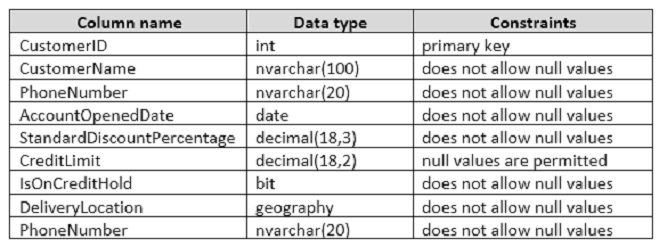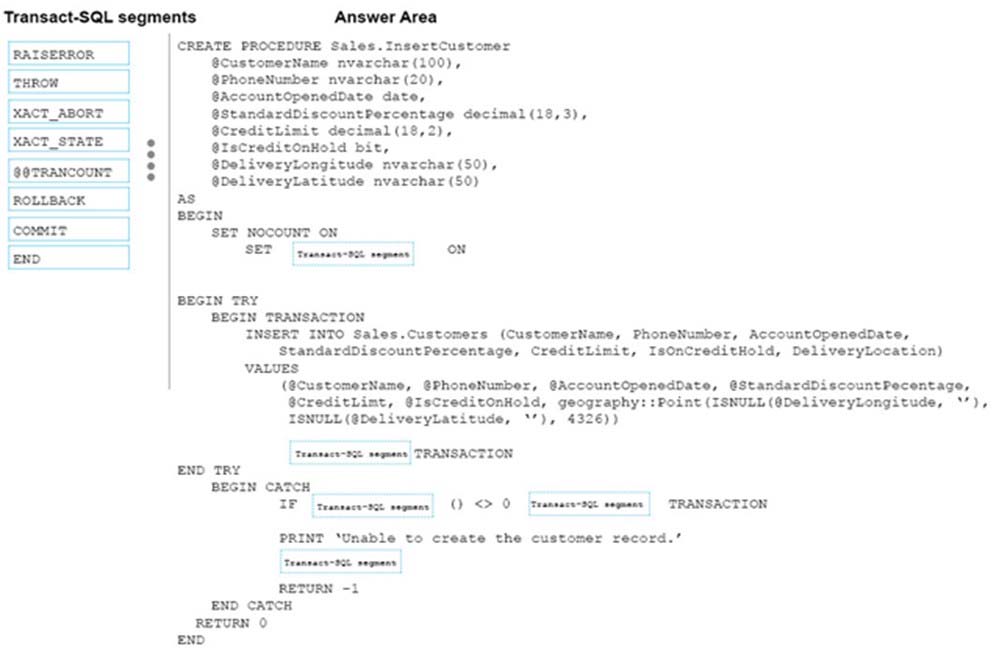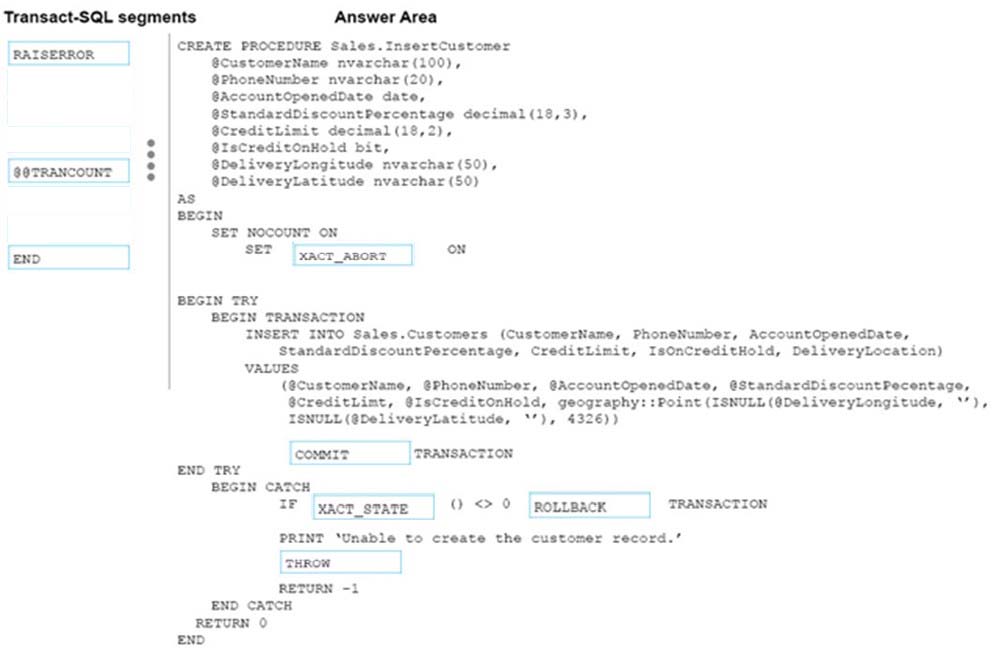

DRAG DROP -
Note: This question is part of a series of questions that use the same scenario. For your convenience, the scenario is repeated in each question. Each question presents a different goal and answer choices, but the text of the scenario is exactly the same in each question in this series.
You are developing a database to track customer orders. The database contains the following tables: Sales.Customers, Sales.Orders, and Sales.OrderLines. The following table describes the columns in Sales.Customers.
The following table describes the columns in Sales.Orders.
The following table describes the columns in Sales.OrderLines.
You need to create a stored procedure that inserts data into the Customers table. The stored procedure must meet the following requirements:
✑ Data changes occur as a single unit of work.
Data modifications that are successful are committed and a value of 0 is returned to the calling procedure.
✑ Data modifications that are unsuccessful are rolled back. You must display a message that uses severity level 16 and a value of -1.
✑ The stored procedure uses a built-in scalar function to evaluate the current condition of data modifications.
✑ The entire unit of work is terminated and rolled back if a run-time error occurs during execution of the stored procedure.
How should complete the stored procedure definition? To answer, drag the appropriate Transact-SQL segments to the correct targets. Each Transact-SQL segment may be used once, more than once, or not at all. You may need to drag the split bar between panes or scroll to view content.
NOTE: Each correct selection is worth one point.
Select and Place:

Abhilash_KK
Highly Voted 5 years, 9 months agoAnette
5 years, 1 month agoPHaringsNL
Most Recent 4 years, 5 months agoPHaringsNL
4 years, 5 months agoeggzamtaker
4 years, 5 months agoVermonster
4 years, 5 months agoHoglet
4 years, 6 months agoZSQL
4 years, 8 months agoJangstar
4 years, 9 months agovermeilyn
5 years, 1 month agovermeilyn
5 years, 1 month agoBarbedx
5 years, 4 months agomatija1
5 years, 4 months agodaniel_yes23
5 years, 2 months agoAnette
5 years, 1 month agoBabyBee
4 years, 7 months ago